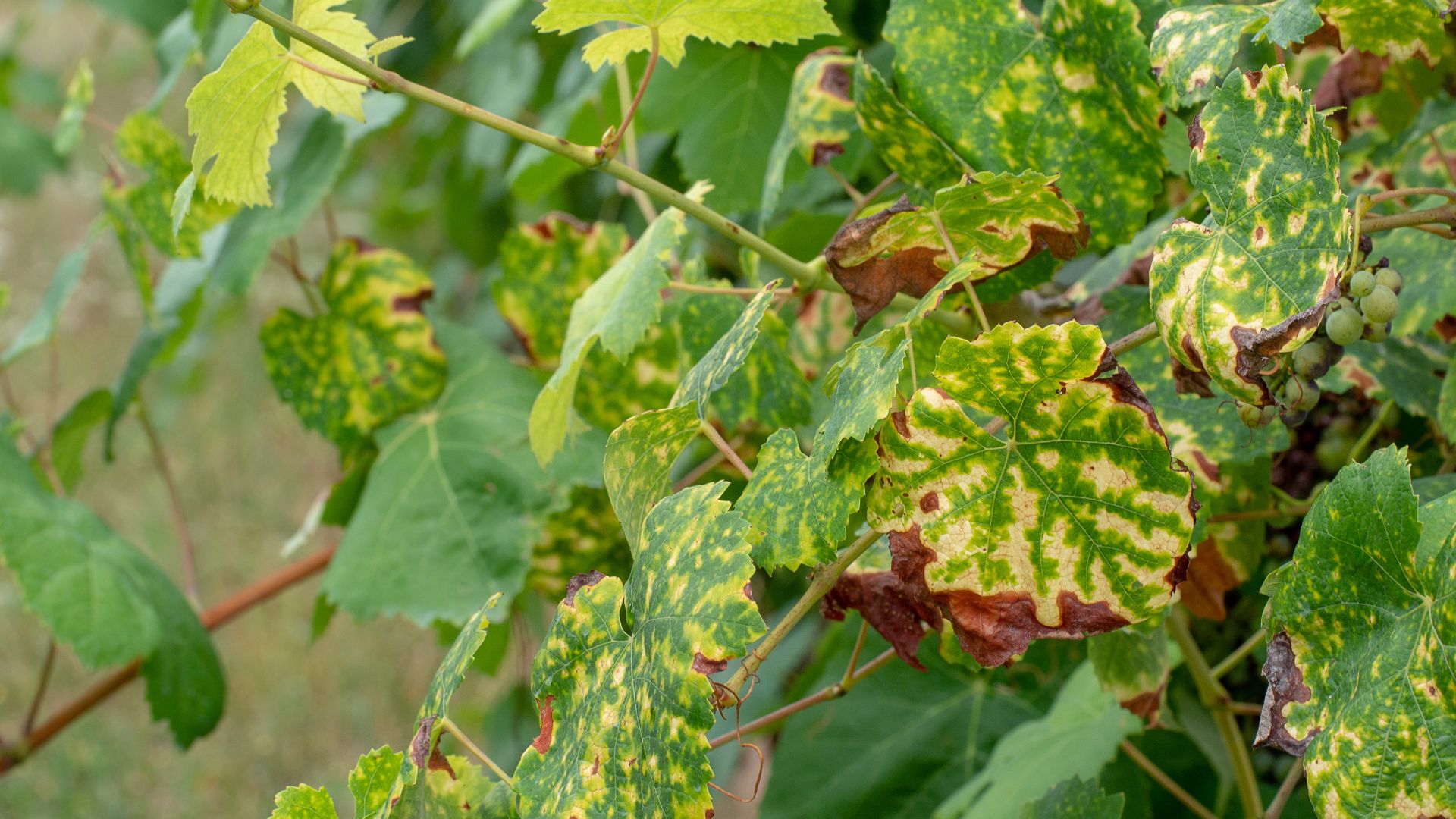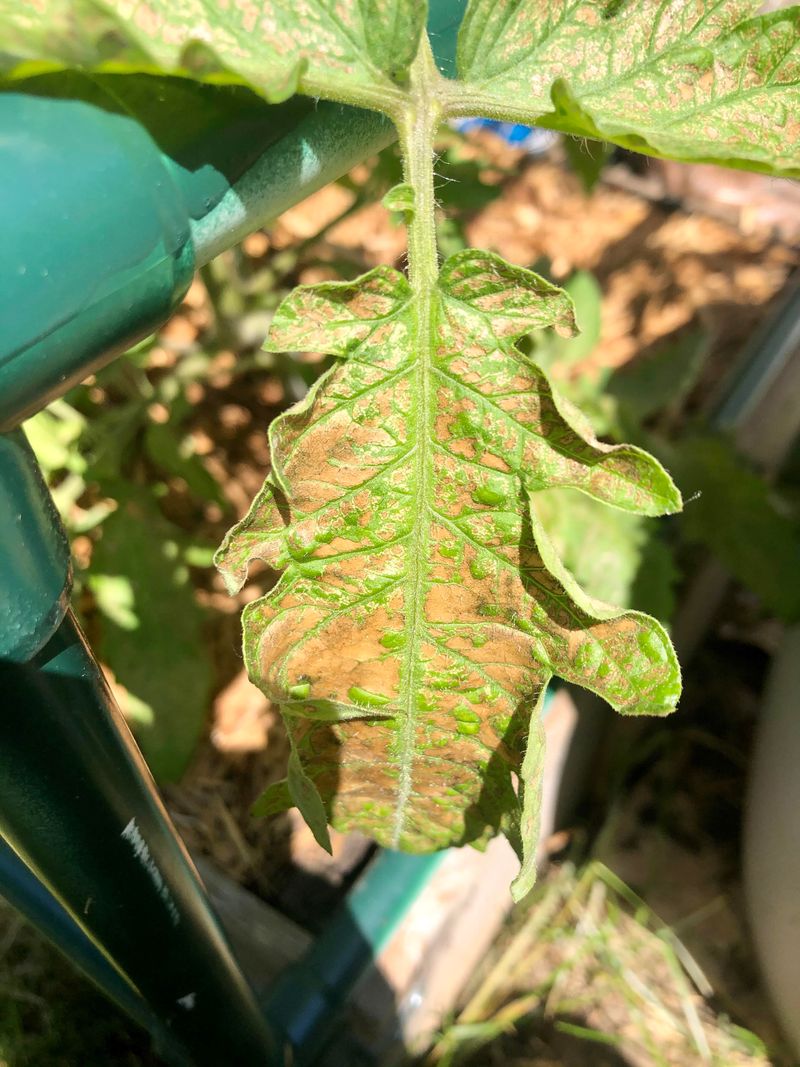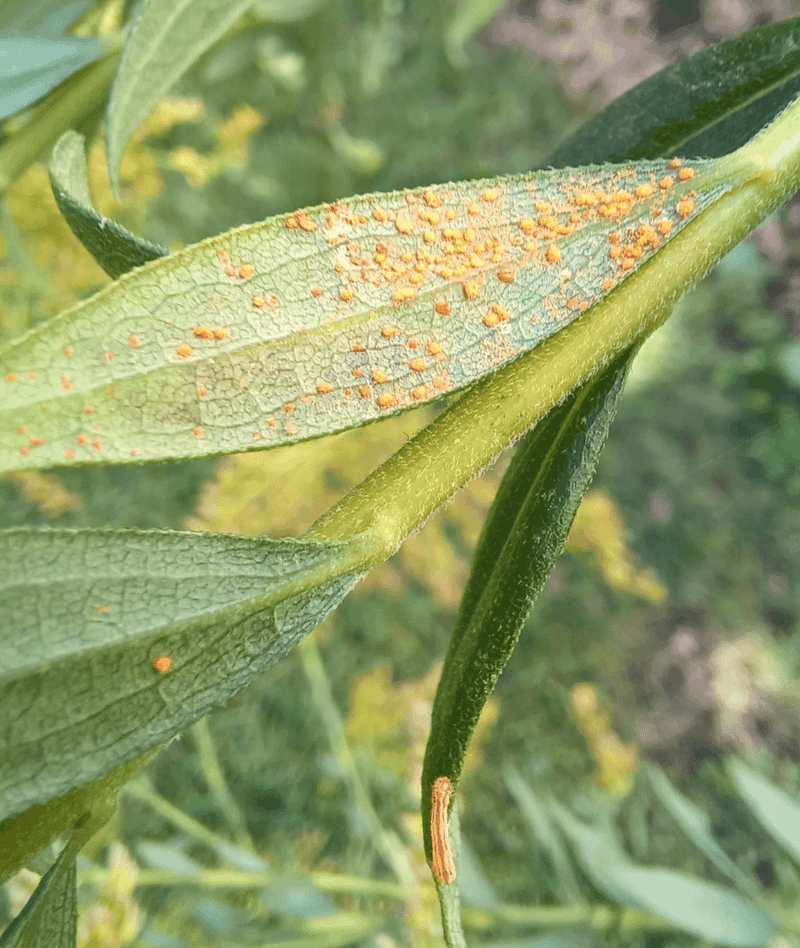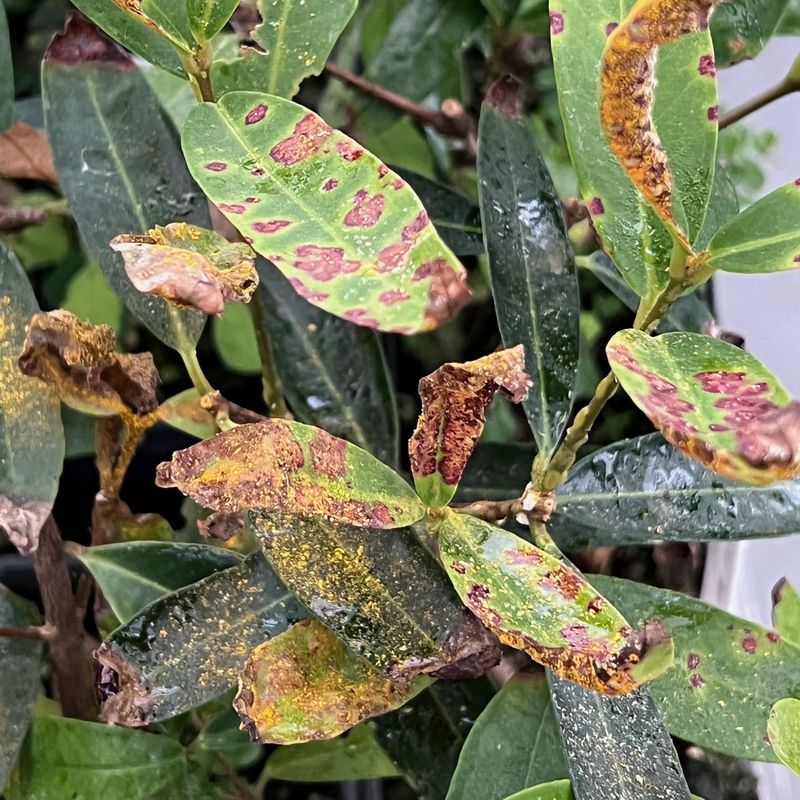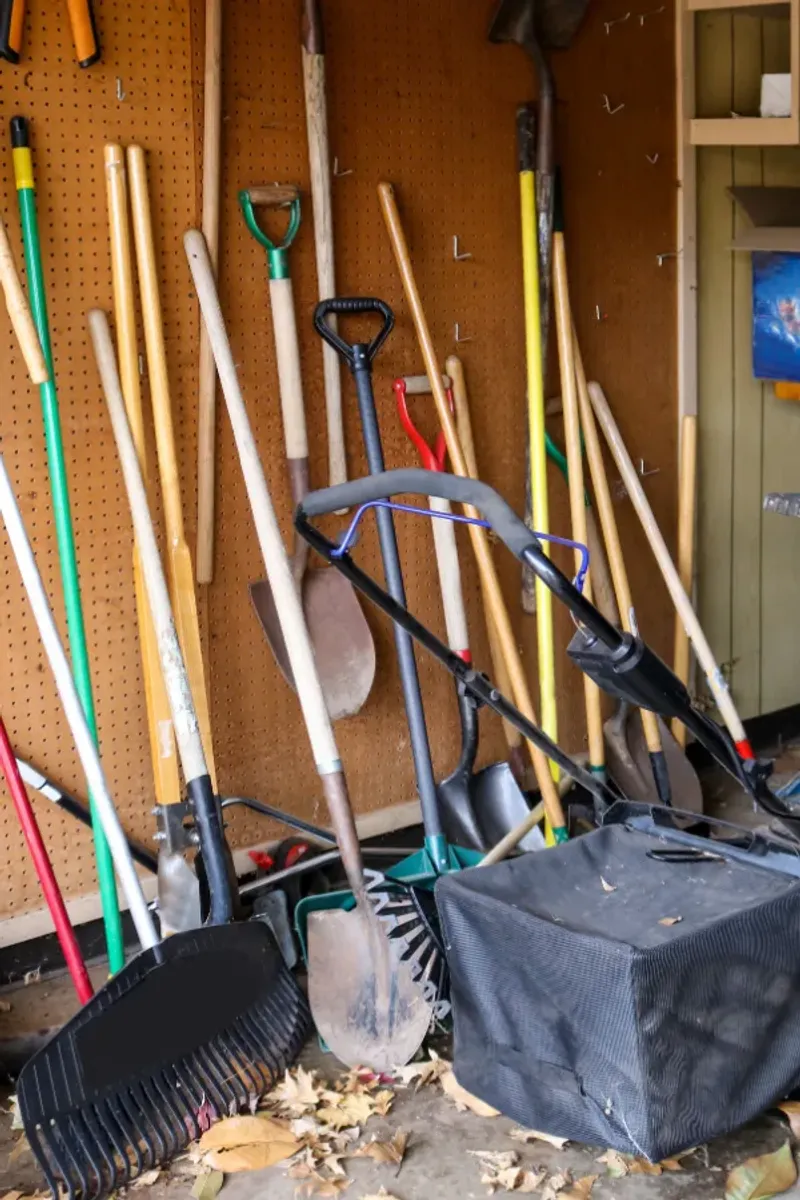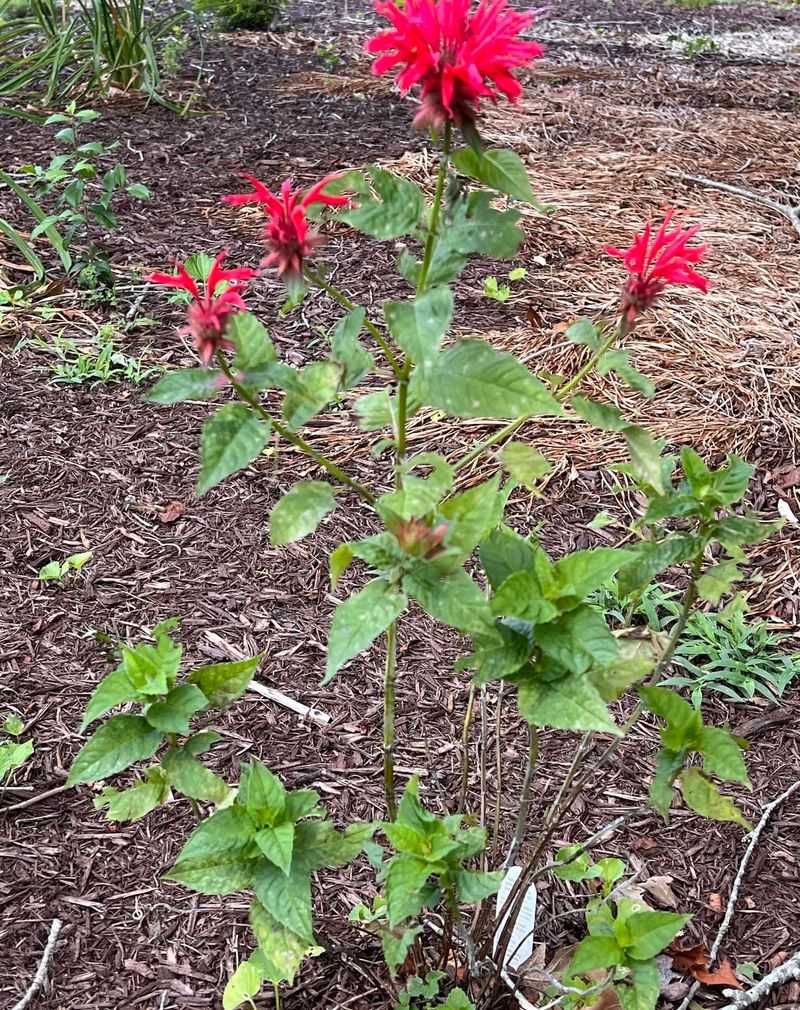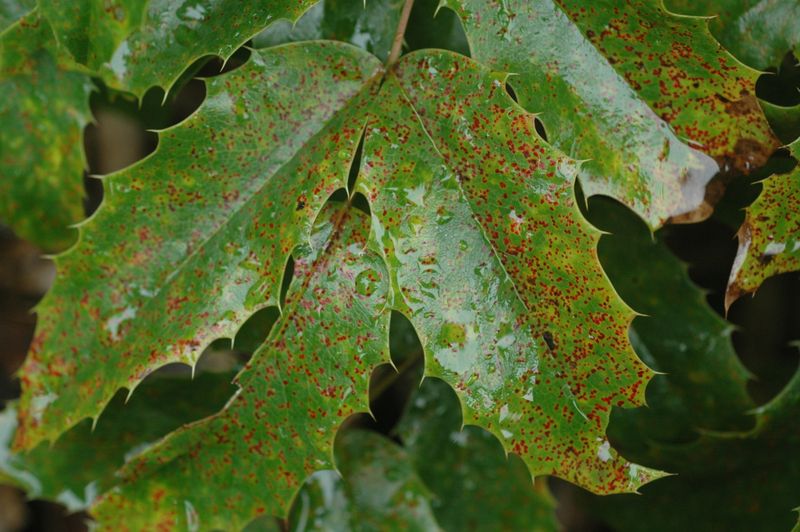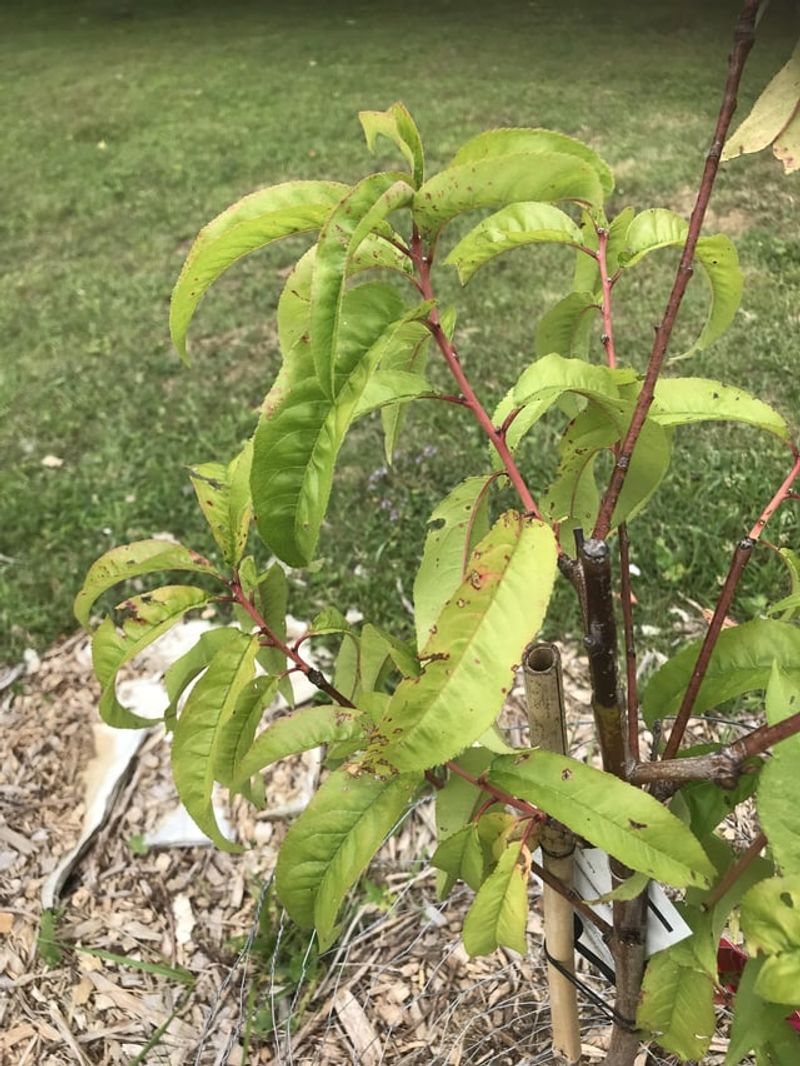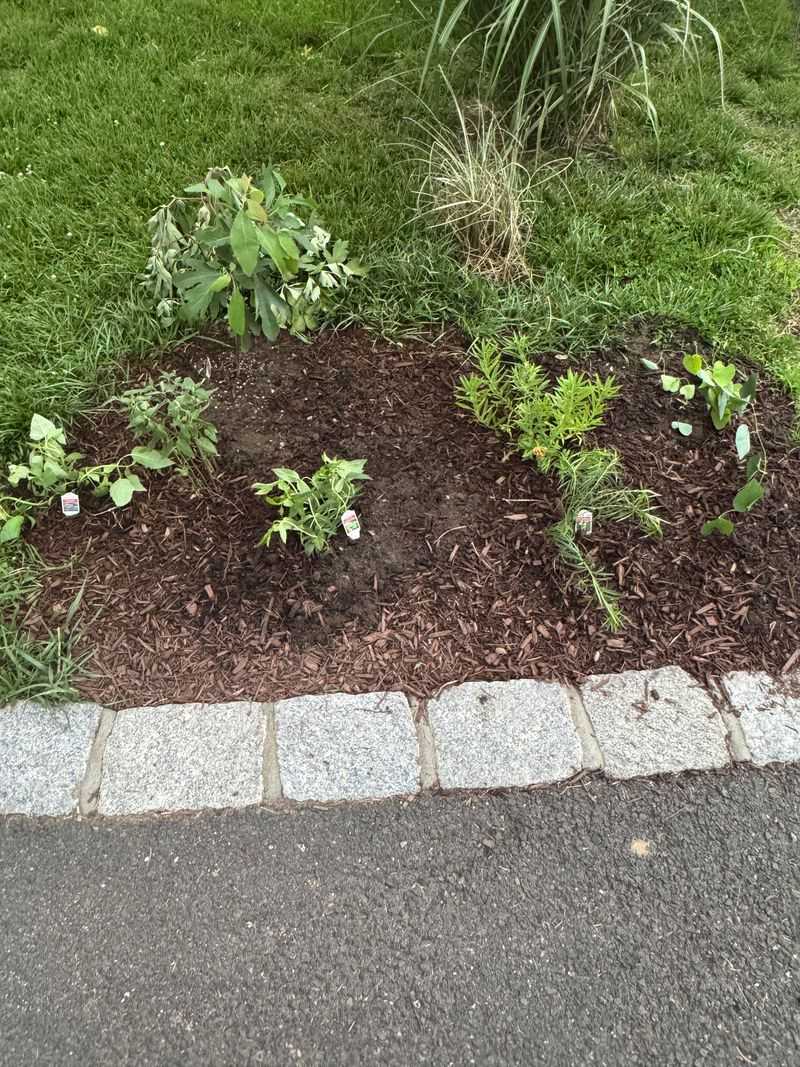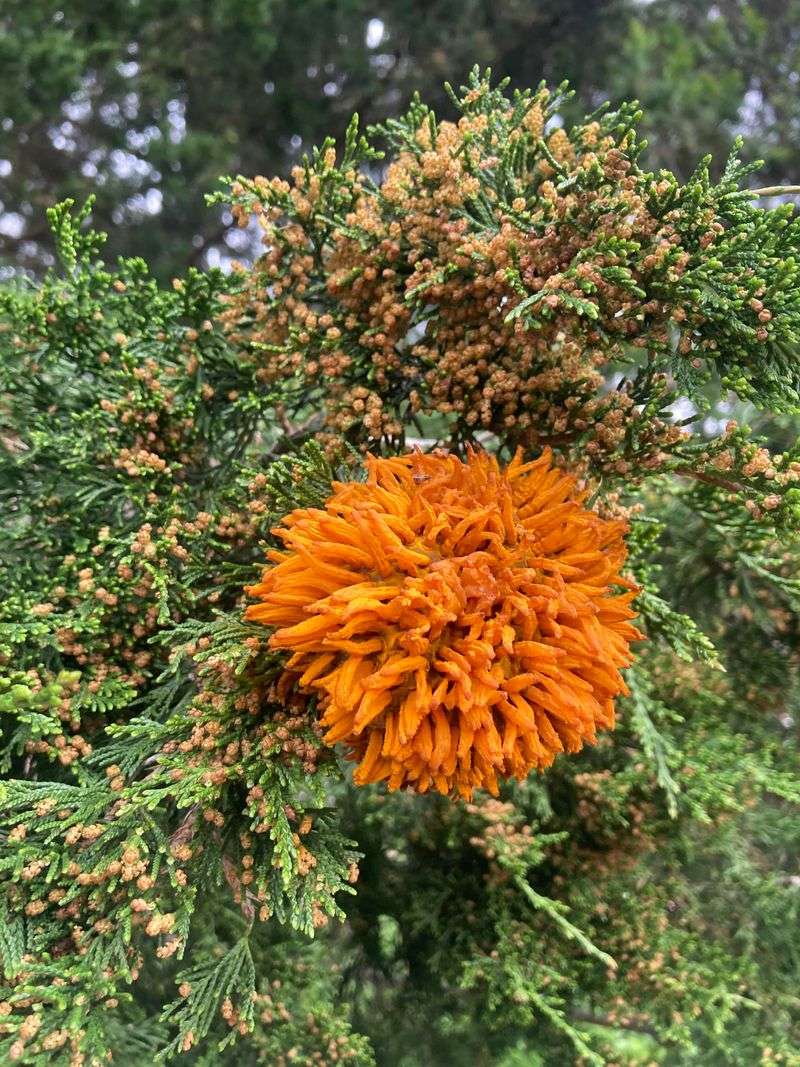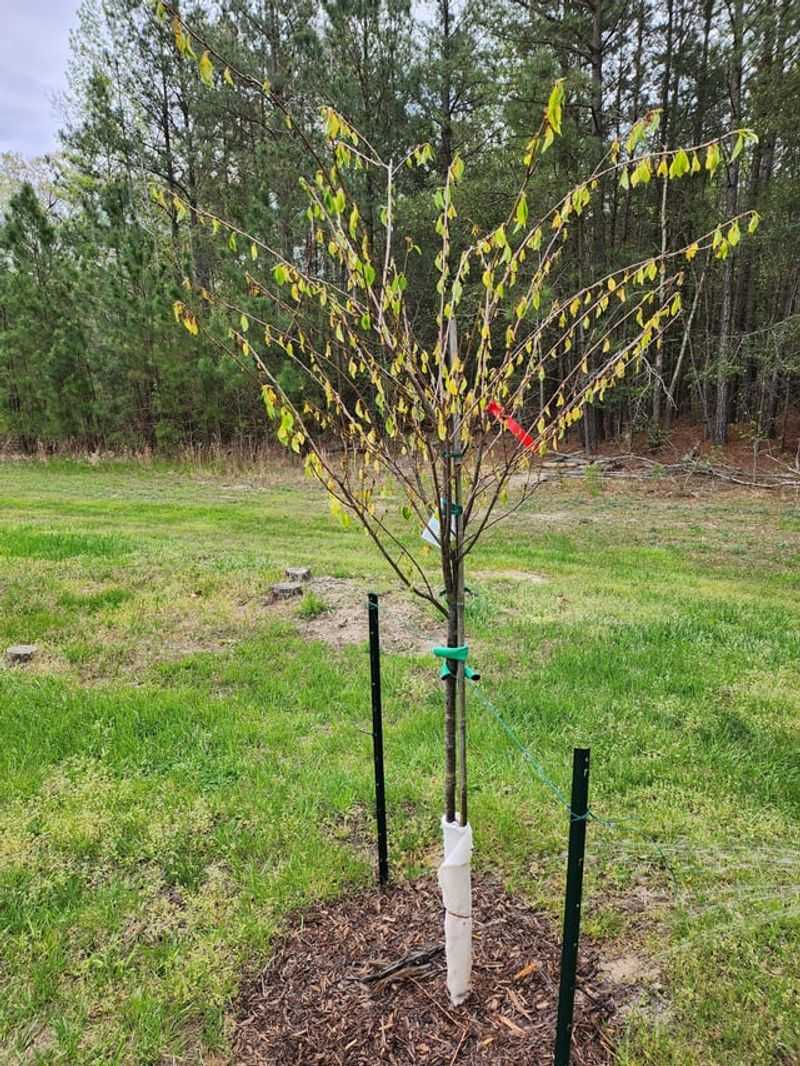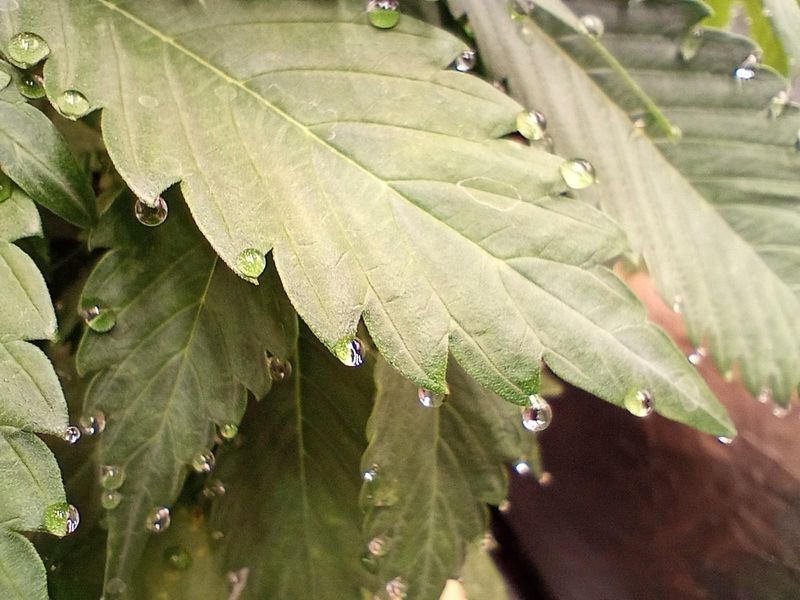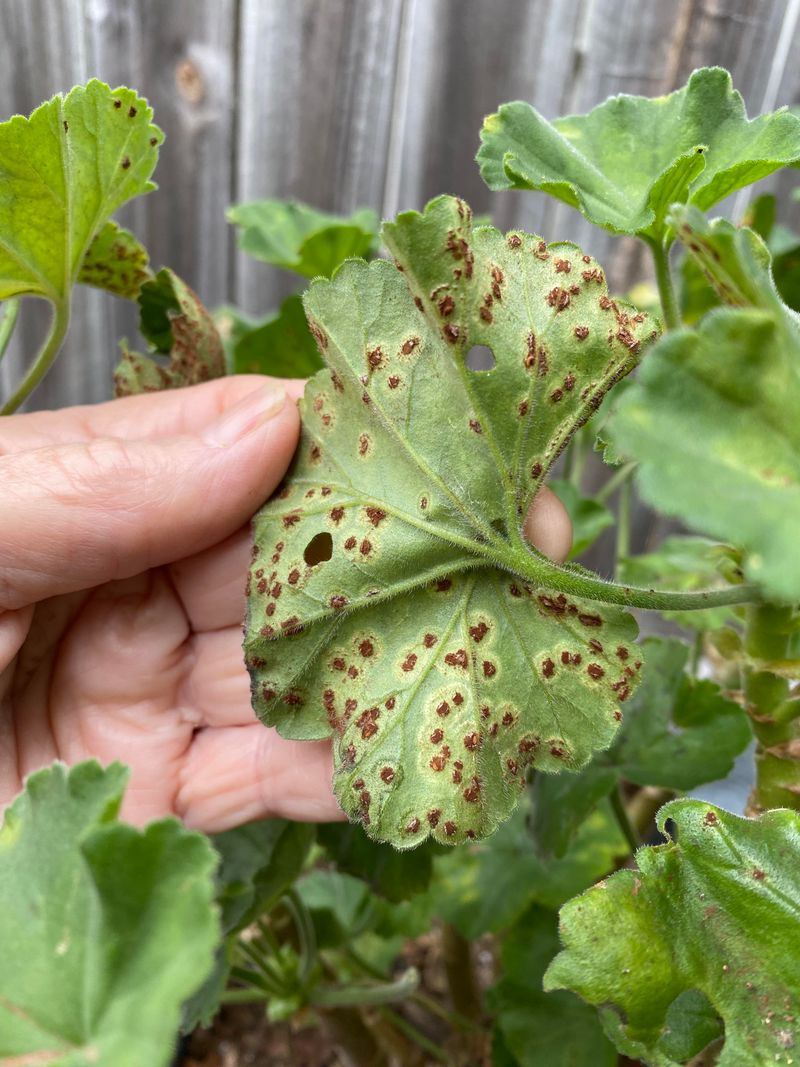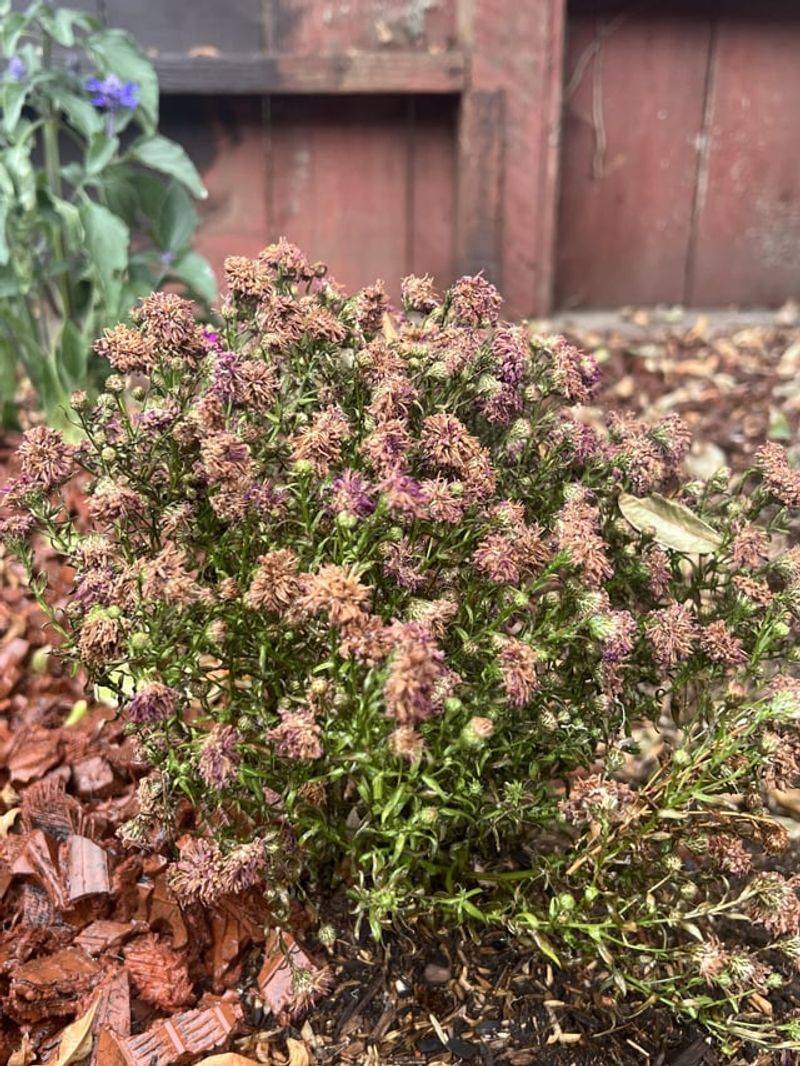Rust on leaves is one of the most common problems Maryland gardeners face, especially during our humid summer months. Those orange-brown spots aren’t just unsightly—they can seriously weaken your plants over time and reduce your garden’s productivity.
In my own Maryland garden, I’ve seen how fast rust can spread when the mornings stay damp for too long. The disease typically starts with small spots that gradually expand and turn into powdery pustules that easily rub off on your fingers.
Understanding what causes rust is the first step to preventing it. Maryland’s combination of warm temperatures and frequent rainfall creates perfect conditions for fungal diseases like rust to thrive in our gardens.
1. Excessive Humidity
Maryland summers bring sticky, humid air that rust fungi absolutely love. The moisture sits on leaf surfaces, creating perfect conditions for spores to germinate and infect.
Spacing plants properly allows better air circulation. I learned this lesson the hard way after planting my roses too close together one year.
Morning dew that can’t dry quickly becomes a rust invitation, especially in gardens near the Chesapeake where humidity levels stay consistently high.
2. Poor Air Circulation
Plants crammed too closely together trap moisture between their leaves. This creates a microclimate where rust spores can easily take hold and multiply.
My vegetable garden suffered terribly until I started pruning lower branches and spacing plants properly. Gardens in Maryland’s more densely wooded areas face this challenge constantly.
Removing some interior branches from shrubs and trees creates pathways for air to move through, helping leaves dry faster after rain or irrigation.
3. Overhead Watering
Splashing water onto leaves during evening watering sessions leaves moisture sitting overnight. Rust fungi need this wet environment to infect plants.
Switch to drip irrigation or soaker hoses that deliver water directly to the soil. I made this change in my perennial beds and saw rust problems decrease dramatically.
If you must use sprinklers in your Maryland garden, run them early in the morning so leaves have time to dry before evening temperatures drop.
4. Late-Day Watering
Watering in late afternoon or evening means plants stay wet through the cool Maryland nights. This creates prime conditions for rust spores to germinate and penetrate leaf tissue.
Morning watering gives plants time to dry before sunset. I’ve found this simple schedule change makes a huge difference, especially for my roses and hollyhocks.
The temperature drop that happens in Maryland evenings combined with wet leaves creates the perfect storm for rust development.
5. Susceptible Plant Varieties
Some plants are simply more vulnerable to rust infections. Roses, hollyhocks, snapdragons, and daylilies commonly show rust problems in Maryland gardens.
Look for rust-resistant varieties when possible. After losing several hollyhocks to rust, I switched to resistant cultivars that have performed much better in our humid climate.
Native plants often have better resistance to local rust strains since they’ve evolved alongside these pathogens in Maryland’s specific conditions.
6. Infected Garden Tools
Pruners, shears, and other tools can carry rust spores from sick plants to healthy ones. The problem spreads quickly when we move through the garden without cleaning equipment.
Wiping tools with alcohol between plants prevents transmission. I keep a small spray bottle of rubbing alcohol in my garden caddy for quick disinfection.
Maryland’s long growing season means we spend more time pruning and shaping plants, increasing the risk of spreading diseases through contaminated tools.
7. Overcrowded Perennial Beds
Mature perennial gardens often become breeding grounds for rust as plants grow into each other. The dense growth blocks airflow and traps humidity against leaves.
Division is essential every few years. My Maryland garden’s black-eyed Susans needed splitting after they became too crowded and developed rust problems.
Thinning out stands of perennials improves not just air circulation but also reduces competition for nutrients that help plants resist disease.
8. Fungal Spores From Neighbors
Rust spores travel easily on wind currents from neighboring gardens or wild areas. Even with perfect care, your plants might catch rust from sources beyond your control.
Creating windbreaks can help reduce spore infiltration. My garden sits near a wooded area, so I’ve planted a hedge that filters some of the incoming spores during Maryland’s windy spring days.
Community efforts to manage rust can be effective – I’ve joined with neighbors to coordinate rust management in our connected Baltimore County gardens.
9. Nutrient Deficiencies
Plants lacking proper nutrition become stressed and more susceptible to rust infections. Maryland’s clay soils can sometimes be depleted of key minerals plants need for strong immune responses.
Regular soil testing through the University of Maryland Extension helps identify deficiencies. I discovered my garden was low in potassium, which weakened my plants’ natural defenses.
Balanced organic fertilizers support overall plant health and disease resistance better than quick chemical boosts that might stimulate vulnerable new growth.
10. Spring Rain Patterns
Maryland’s frequent spring showers create ideal conditions for rust development. These warm rains provide the moisture spores need to germinate and infect new growth.
Protective fungicides applied before rainy periods can help prevent infection. I watch the weather forecast carefully during April and May to time these applications effectively.
The combination of warming temperatures and regular rainfall makes Maryland’s spring particularly challenging for rust-susceptible plants like roses and fruit trees.
11. Alternate Host Plants
Some rust fungi require two different plant species to complete their life cycle. Cedar-apple rust, common in Maryland, moves between cedar trees and apple trees.
Removing one host breaks the cycle. After struggling with rust on my apple trees for years, I finally removed the ornamental cedar that was serving as the alternate host.
Maryland’s diverse plant communities often include both hosts needed for certain rust types to thrive, making identification of these relationships important for control.
12. Fallen Infected Leaves
Old infected leaves that drop and remain on the ground become sources of new infections. The spores overwinter in this debris and reinfect plants when spring arrives.
Fall cleanup is crucial in Maryland gardens. I’m religious about removing fallen leaves from around my roses before our typically mild winters allow spores to survive easily.
Composting isn’t always hot enough to kill rust spores, so I bag and dispose of heavily infected material rather than adding it to my compost pile.
13. Improper Mulching
Mulch piled against plant stems creates humid pockets and can splash soil-borne spores onto lower leaves during rain. This common gardening mistake contributes to rust problems across Maryland.
Keep mulch pulled back a few inches from stems. I learned to create a “donut” rather than a “volcano” around my plants after battling persistent rust issues.
Organic mulches that break down quickly can sometimes harbor fungi if they’re kept too wet, especially in Maryland’s humid summer conditions.
14. Nighttime Condensation
The temperature drop between Maryland’s warm days and cooler nights creates condensation on leaf surfaces. This regular moisture cycle provides perfect conditions for rust development.
Growing susceptible plants in morning sun locations helps leaves dry quickly after nighttime dew forms. I relocated my rust-prone snapdragons to an eastern exposure with great results.
Coastal areas of Maryland experience even more significant condensation issues due to proximity to the Chesapeake Bay and Atlantic Ocean.
15. Climate Change Effects
Maryland’s gradually warming climate has extended the growing season and changed precipitation patterns. These shifts create new opportunities for rust fungi to thrive and spread.
Adaptation means rethinking traditional planting calendars. I’ve started selecting more heat and disease-resistant varieties as our summers become longer and more humid.
Unusual weather patterns bring unpredictable disease pressure, making vigilant monitoring more important than ever in Maryland gardens.
16. Stress From Transplanting
Recently transplanted plants often experience shock that weakens their natural defenses. This vulnerability makes them easy targets for opportunistic rust infections during their establishment period.
Proper hardening off and timing transplants for cooler, less humid days helps. I’ve found early fall transplanting works best in Maryland to avoid both summer heat stress and rust pressure.
Providing extra care and monitoring for the first month after transplanting can help plants develop resistance before the height of rust season.

